|
 Secure Site
Secure Site
|
 |
Archive for February, 2012
 Warm winter sun Winter solitude–
in a world of one color
the sound of wind.
by Matsu Basho
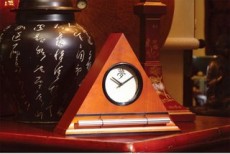 Chime Alarm Clock Now & Zen
1638 Pearl St.
Boulder, CO 80302
(800) 779-6383
Posted in Goodness, nature
 moon viewing occasional clouds
one gets a rest
from moon-viewing
by
Matsuo Basho
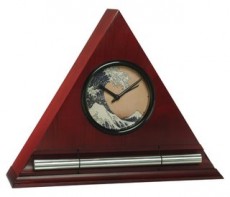 Wave Dial Face Now & Zen
1638 Pearl St.
Boulder, CO 80302
(800) 779-6383
Posted in nature

Spiced Hot Dark Chocolate
According to Ayurvedic medicine, warming spices such as cinnamon and cardamom can help boost energy. And by swapping soy milk for regular, you ensure that dark chocolate’s antioxidants will be more fully absorbed.
Ingredients
- 1 quart soy milk
- 6 ounces dark chocolate, coarsely chopped
- 1/2 teaspoon ground cinnamon
- 1/8 to 1/4 teaspoon ground cardamom
- 1/8 teaspoon ground cayenne pepper
- 1/8 teaspoon coarse salt
Directions
- In a small saucepan, combine all ingredients and whisk over medium-low heat until the chocolate has melted completely and the mixture is steaming hot, about 5 minutes. Serve.adapted from www.wholeliving.com
Now & Zen, Inc.
1638 Pearl St.
Boulder, CO 80302
(800) 779-6383
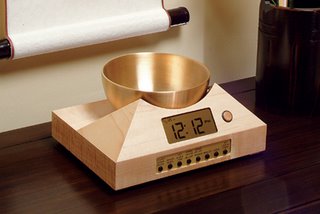 timer for tea with gentle bowl gong sound
Posted in Uncategorized, Zen Timepiece by Now & Zen, Zen Timers
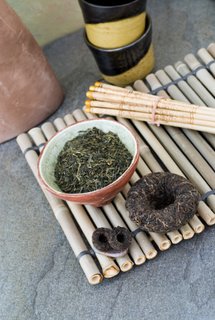 making medicinal teas Body+Soul, June 2008
Medicinal teas are easy, natural ways to help relieve numerous ailments such as PMS, hot flashes, mood-swings, and fatigue. Here is how to brew your next batch.
For dried herbs and supplies, try Jean’s Greens or Mountain Rose Herbs.
Single Ingredient Teas
Leaves And Flowers
Pour a quart of boiling water over 4 tablespoons of the herb, cover and steep for 20 minutes, and strain.
Roots, Berries, Or Bark
Simmer 4 tablespoons for 20 minutes, then strain.
Tea Blends
For teas that call for multiple ingredients, you’ll save time by making a large batch of dried herbs.
To make a blend, follow the ratio in the recipe, using 1 ounce of dried herb per “part”; for example, if a formula calls for one part each of nettle and oat tops and 1.4 part peppermint, combine 1 ounce each of the first two ingredients with 1.4 ounce of the last. Mix well, and store your blend in an airtight glass container.
To make a quart of tea, a good daily dose for many conditions, pour boiling water over 4 tablespoons of the mixture in a quart-sized heat-proof jar (such as a Mason jar). Cover and steep for at least 20 minutes. Strain the herbs out. Will keep refrigerated for two to three days.
Tea Recipes for Women’s Health
PMS Relieving Nettle Tea
Pour a quart of boiling water over 4 tablespoons dried nettles (plus a tablespoon of spearmint or peppermint for flavor); steep for at least 20 minutes, and strain. Drink 2 cups or more daily.
Cramp-Relief Tea
Add 5 to 6 tablespoons of fresh or dried ginger to 1 quart of water; cover and simmer for 10 minutes. Add honey and lemon to flavor. Sip hot throughout the day.
Pregnancy-Prep Tea Blend
Combine 1 part each of dried tea nettle leaf, raspberry leaf, lady’s mantle, and cut-and sifted ginger. Drink 3 to 4 cups daily.
A Fatigue Fixing Tea Blend
Mix equal parts nettle, raspberry leaf, oat tops, and lemon balm with 1/4 part each of cut-and sifted licorice and ginger. Drink 3 cups daily.
Hot Flash Cooling Tea Blend
Combine equal parts sage, blue vervain, and motherwort with 1/2 part peppermint or spearmint for flavor. Drink throughout the day as needed.
Happiness Tea Blend
Combine equal parts hawthorn (berries, leaf, and flowers), lemon balm, St. John’s wort, blue vervain, and oat tops. Drink 3 to 4 cups daily.
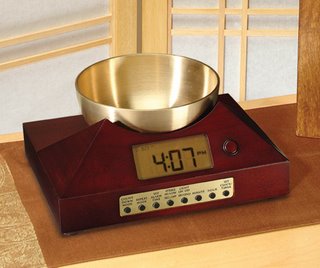 timer with gong Now & Zen, Inc.
1638 Pearl St.
Boulder, CO 80302
(800) 779-6383
Posted in Tea Ceremony, Well-being
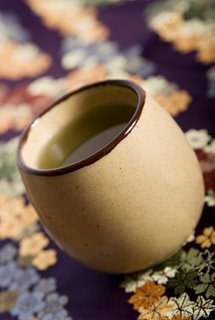 tea for coughs
Sizing up 25 studies on over-the-counter cough medicine, a recent research review published in “The Cochrane Library” determined that there’s no good evidence for or against the effectiveness of formulas such as Robitussin and Mucinex.
For natural, reliable cough relief, try a tea recipe recommended by Tieraona Low Dog, M.D., director of education at the University of Arizona’s Program in Integrative Medicine. It features thyme, which alleviates chest congestion and supports respiratory function, along with throat-soothing honey, sage, and vitamin-C-rich lemon.
Cough-Control Tea
1. Pour hot water over 2 teaspoons organic lemon rinds, 1 teaspoon sage, and 1/2 teaspoon thyme. (Dried or fresh herbs can be used.)
2. Cover and steep for 15 minutes. Use your Digital Zen Timer.
3. Strain tea, then add juice of 1/2 lemon and 1 tablespoon honey.
4. Drink two to three cups daily for cough relief.
adapted from Body and Soul Magazine
 tea timers with chime Now & Zen, Inc.
1638 Pearl St.
Boulder, CO 80302
(800) 779-6383
Posted in Tea Ceremony

Partner yoga can help you deepen both your poses and your relationships. “Doing yoga with a partner makes many poses more accessible, comfortable, and therapeutic,” says Mary Aranas, who teaches at Pure Yoga and leads partner yoga workshops around the country. “By holding onto another person, you can balance better than you could on your own, move into poses more deeply, and hold them longer, which increases strengthening and stretching.” Working in tandem also improves communication. All you need is a spouse, a friend, or another willing partner — and neither of you has to be overly fit or flexible. Aranas chose the following poses, including tension-busting twists and restorative stretches, for their simplicity.
Benefits: Increases lung capacity, stretches the torso, and lifts the spirit.
How to Do It: Stand facing each other, feet hip-width apart so that you can comfortably hold each other’s forearms with your arms bent. Inhale and lift the chest, then exhale and drop head gently back, straightening arms. Hold the pose for 2 to 3 breaths. Inhale, and return to standing.
adapted from www.wholeliving.com
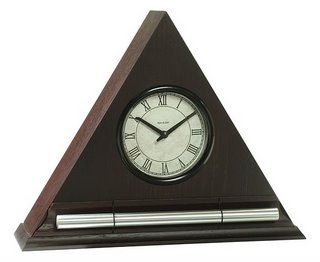 partner yoga Now & Zen, Inc.
1638 Pearl St.
Boulder, CO 80302
(800) 779-6383
Posted in yoga, Yoga Timer, Yoga Timers by Now & Zen
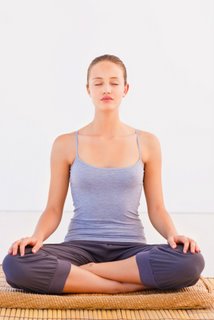 yoga to reduce blood pressure By consciously shifting your emotional state, you can help lower your blood pressure naturally, without medication.
By Rollin McCraty
A heart rate changes with every beat, even when a person is sitting still. The heart rate variability is affected by both the sympathetic nervous system—the signal to gear up for a stressful situation—and the parasympathetic nervous system, which tells the body to relax. When a person is angry or upset, the heart receives mixed messages, causing a jerky heart pattern. This extra wear-and-tear causes blood pressure to rise.
Luckily, when the emotional state is shifted, the heart rate can be physically affected. In turn, the entire physiological system works more efficiently. One popular stress buster is a technique called Freeze Frame. Begin by recognizing the stressful feeling and freeze-frame it. Then shift the focus away from the racing mind or disturbed emotions. Breathe through the heart area to help focus the energy for 10 seconds or more. Recall a positive feeling or time and attempt to re-experience it. Then, ask the heart what would be a more efficient response to the situation—one that will minimize future stress. Using this one-minute practice regularly can help keep blood pressure at safe levels.
Rollin McCraty, M.A., director of research at the Institute of HeartMath in Boulder Creek, CA. The HeartMath Solution (HarperSanFrancisco, 1999) explains the research behind the Freeze Frame technique.
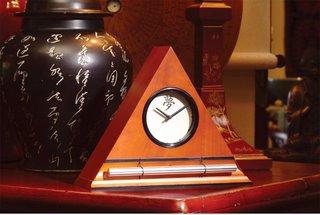 yoga timers and chime alarm clocks
Now & Zen
1638 Pearl St.
Boulder, CO 80302
(800) 779-6383
adapted from Yoga Journal.com
Posted in yoga, Yoga Timer, Yoga Timers by Now & Zen
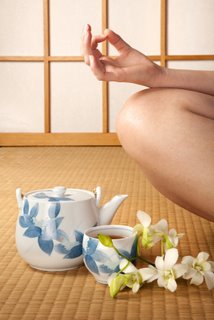 tea and yoga Enjoyed for centuries as a healthy drink, tea also has merits as a postyoga refreshment with the ability to foster community and dialogue among students—while soothing the senses, too.
By Angela Pirisi
When students are roused from their final relaxation after a yoga session and you see them emerge glowing and peaceful from the stillness of their mat, the last thing you want to do is turn them out into the noise, chaos, and stress of the world outside the studio. It’s too jolting a contrast, and students often need some time to digest their yogic experience and slowly transition back to their daily lives. That’s why, for many yoga studios, the bridge between yoga and the high-intensity pace outside is a warm cup of tea.
Serving Health and History
Many studios serve tea, usually after class, as a way to offer students an opportunity to bask in the buzz of yoga. “People’s hearts are really opened after yoga, and tea offers a perfect segue back into their reality,” says Elissa Kerhulas, a Kundalini teacher and owner of Yoga Brew in Hollywood, California. Tea is an informal yoga tradition that has taken root over the years, and growing knowledge about the various health benefits of tea have made it a welcome addition to yoga classes as one more way to embrace healthy living. While it’s not a ritualized process per se, the tradition of combining tea and yoga has an ancient connection.
“Yoga and Ayurvedic medicine go hand in hand,” says Kerhulas, who offers tea (and/or soup) as part of her home-catered yoga classes. She remembers her Kundalini teachers talking about tea all the time. For example, “yogi tea,” a home-brewed spice tea, includes traditional Ayurvedicspices, such cloves, black pepper, cinnamon, cardamom, and ginger, in a black tea base, sweetened with milk and honey. The recipe was inspired in the 1960s by Yogi Bhajan, who served the tea to students. Many teachers, though, have stepped away from this traditional recipe and are serving up drinks that range from green tea to roasted barley to custom herbal blends.
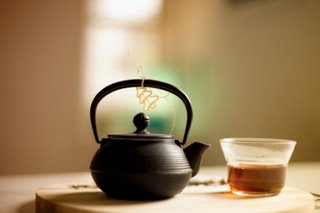 yoga and tea Kerhulas was brewing her own custom blends when she started her business six years ago, but she then started consulting a master herbalist who now intuitively assesses the best brew for each of her classes. “The kind of tea I serve depends on the people in a class, as well as the time of day,” Kerhulas explains. “For morning classes, I might start with something such as chai, ginger, or yogi tea because of their invigorating and stimulating properties. For evening classes, I would more likely choose something calming or grounding, such as jasmine, lavender, wood betony (mint family), licorice, or chamomile.” Her one-of-a-kind tea blends often combine several herbs.
Melanie Smith, an Anusara yoga teacher and owner of Yogaphoria in New Hope, Pennsylvania, offers students custom-blended teas made just for her studio, including black, green, and Rooibos teas. “Serving tea arose from the desire to serve something healthy and nurturing,” she says. On a more personal level, though, adds Smith, “I’m a big fan of tea and what it can do for the body—its healing properties and antioxidants.”
Opening Hearts and Minds
Besides soothing and healing properties, the main thrust behind a postyoga cup of tea is about the social bonding and unity it creates among students. “It’s very much about community, a chance to get to know each other, as well as a chance to be part of that energy and keep that energy, too,” says Smith. Her studio includes a space created specifically for tea, the Tea Lounge. She describes it as a place where students can study, do their work, and process what they’ve learned in classes or teacher training.
Other teachers agree that tea can help facilitate learning and discussion. Jennifer Durand, who teaches hatha yoga at the Healing Yoga Foundation in San Francisco, leads the Ladies’ Tea and Yoga Society, where students convene after her hour-long class for tea and philosophical discussion, either in the studio, which is an old greenhouse, or in the garden. Durand describes these gatherings as significantly more social than, say, a Japanese tea ceremony. “When everyone has settled, I either introduce a topic of discussion (anything from a Yoga Sutra to how we can eat more healthfully) or I let the conversation unfold on its own. Increasingly, I’ve been choosing the latter, as it seems to me that the women are enjoying the chance to connect in their own way,” says Durand.
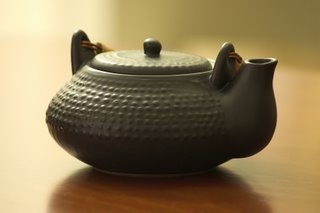 tea “The way the Society came about was that, of course, hatha yoga gets you only so far—it gives you a certain discipline, to be sure, and it can create a stronger, healthier body,” explains Durand. “But one must take it that extra distance for the practice to be truly transformative; one has to delve into the philosophical side of things. I find the best way to introduce the Sutra is through the gentle approach of sneaking it in with tea and treats.”
Whether used for its mystical or medicinal properties, tea has become an integral part of yoga, and students seem to have no trouble warming up to the experience.
Tips for Serving Tea
While there is no rule book for serving tea with yoga, there are some ways to enrich the experience by setting the right mood.
Invite all of the senses. Kerhulas stresses maintaining a clean, uncluttered space; adding beautiful objects (flowers, artwork); serving tea in a porcelain or wooden cup; playing light, meditative music; and using incense, such as sandalwood (which is very grounding). “Basically, it needs to feel as if you are entering a special zone that’s separate from the stresses of everyday life,” she says.
Serve only the finest tea. “Make sure to use good, loose-leaf tea to enhance the whole experience—it’s more healing and beneficial,” says Smith. On a practical note, Smith advises that if you want to use fine china, you have to clear it with the local health department. In fact, Smith says she has a restaurant license just to brew and serve tea. Using any nondisposable dishes or cutlery would require having a dishwasher and a three-basin sink. In Pennsylvania, where she is, you’re regulated as soon as you serve anything—the law could vary across the states.
Make it comfortable. It’s about creating a space where students feel welcome, loved, and nurtured, says Smith. That’s why she chose to place a large, L-shaped, lavender sofa in her Tea Lounge, custom-designed to be extra deep so students could easily sit on it in the Lotus position. Both the sofa and room are decorated with soothing, soft shades, such as sage, turmeric, and saffron.
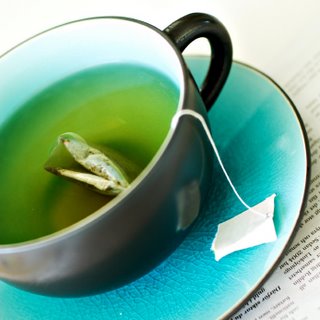 tea Pair it up with healthy food. Kerhulas serves homemade vegetarian or vegan soups (such as black bean, curried butternut squash, or potato leek). Smith says the Tea Lounge sells only green, raw, or organic snack bars and fruit—”things that enhance health, nothing processed.”
The guidelines vary by state, and maybe even by city or town, but Smith suggests that once you’re preparing and serving food or drink, you’re starting a relationship with the health department. And if you aren’t following the local laws and you’re found out, you can be reprimanded, fined, or even shut down. The best policy is transparency. Call your local health department; tell them exactly what you’re planning to do, serve, and sell; and then fill out the proper paperwork. Your best bet is to follow all relevant laws.
Angela Pirisi is a freelance health writer who has covered holistic health, fitness, nutrition, and herbal remedies. Her work has appeared in Yoga Journal as well as inNatural Health, Fitness, Cooking Light, Let’s Live, and Better Nutrition.
 bowl gong timers for tea, yoga and meditation Now & Zen, Inc.
1638 Pearl St.
Boulder, CO 80302
(800) 779-6383
adapted from Yoga Journal.com
Posted in Tea Ceremony, teahouse
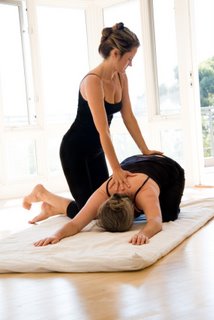 Yoga injuries These herbs help heal and prevent common yoga injuries.
By James Bailey, L.Ac., M.P.H.
In my early 30s I began to experience a greater sensitivity in my joints during my yoga practice, which culminated in three injuries in one year. Being an herbalist and a devoted yoga practitioner, naturally I explored using herbs both internally and topically. After some experimenting, I found I could minimize cycles of stiffness and pain after class and even prevent reinjury.
Injuries caused by a hatha yoga practice are usually minor and limited to simple ligament sprains and muscle strains, with the occasional slip, fall, or forced adjustment. The most common injuries are caused by repetitive isometric strain or overstretching and occur at the wrists, shoulders, neck, along the spine, and at the sacroiliac joint, hamstrings, and knees. If not addressed, these minor setbacks can have a long-term impact on the balance of alignment within the practice. Some yogis even bring ailments to the mat, which can also have lifelong effects upon range of motion, breathing, supply of energy, and quality of meditation.
There are two botanical approaches to injury care. In the trauma phase, when an injury first occurs, herbs should be used both internally and topically to relieve acute pain and inflammation. Then in the recovery phase introduce herbs to nourish and strengthen the joints and soft tissues. When an injury first occurs, simple strains and sprains require herbal compounds that improve the circulation of prana (life force) and blood in and around the injury. Even minor trauma can have the undesired effect of reduced local circulation, pain, swelling, and inflammation. Topical applications target the traumatized area directly. The active constituents of the topical herbs are absorbed through the skin for a more immediate and targeted effect.
Among a large class of generic analgesic and anti-inflammatory substances, a few Ayurvedicclassics stand out. Salai guggul, Kapitthaparni, and Bola are three related plant sap resins used internally and topically to reduce pain, strengthen bones and joints, and cleanse the blood of toxins that accumulate around injury sites.
White willow is a Native American remedy and natural source of salicylic acid, the forerunner of aspirin, but without the blood-thinning and stomach-irritating side effects. It also improves mobility in sore or creaky joints. Notoginseng, a relative of Panax ginseng, is known for its analgesic effects on injuries. It is used throughout Asia to improve circulation and support the adrenal glands in the production of inflammation-reducing corticosteroids.
Once the pain subsides, it is important to introduce herbs that rejuvenate and strengthen joints and soft tissues. These herbs do not remedy the acute, aggravated phase of the injury but instead strengthen the integrity of the tissues and support a more complete recovery. They also are ideal for yoga practitioners who have ongoing vulnerabilities in the joints.
For the later stage of injury recovery, use herbs that supply a natural plant source of collagen and silica, both important for rebuilding soft tissue. Eucommia, a renewable tree bark, supplies plant collagen directly to the damaged area and also can be safely used as a long-term joint supplement for both injury recovery and prevention. Eucommia is traditionally believed to strengthen a weak lower back and knees; it also protects the lumbar spine and sacrum in backbending and hip-opening postures, and the knees in postures like Padmasana (Lotus Pose) and Virasana (Hero Pose). Horsetail, a reedlike plant, contains large amounts of natural silica, which speeds the repair and regeneration of connective tissue, thus improving its strength and elasticity.
but without the blood-thinning and stomach-irritating side effects. It also improves mobility in sore or creaky joints. Notoginseng, a relative of Panax ginseng, is known for its analgesic effects on injuries. It is used throughout Asia to improve circulation and support the adrenal glands in the production of inflammation-reducing corticosteroids.
Once the pain subsides, it is important to introduce herbs that rejuvenate and strengthen joints and soft tissues. These herbs do not remedy the acute, aggravated phase of the injury but instead strengthen the integrity of the tissues and support a more complete recovery. They also are ideal remedies is meant to complement the conventional wisdom of resting and icing. Of course, for serious injuries or those that do not improve within 72 hours, a professional health-care provider should be consulted.
James Bailey, L.Ac., M.P.H., Herbalist AHG, practices Ayurveda, Oriental Medicine, acupuncture, herbal medicine, and vinyasa yoga in Santa Monica, California.
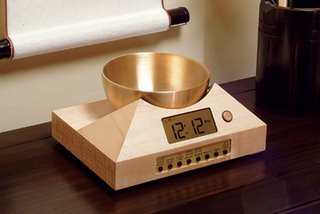 timers for yoga Now & Zen, Inc.
1638 Pearl St.
Boulder, CO 80302
(800) 779-6383
adapted from Yoga Journal.com
Posted in yoga, Yoga Timer, Yoga Timers by Now & Zen
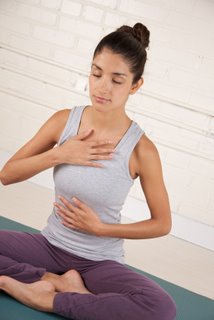 slow down to detox By Hillari Dowdle
Reducing stress and mental overactivity is perhaps the most important element of a successful detox plan, Blossom says. Habitual rushing, multitasking, and dealing with information overloads are the trifecta of American toxicity. And like an overtaxed liver, an overtaxed mind and nervous system can lead to a host of health issues, including adrenal fatigue, insomnia, irregular menstrual cycles, indigestion, and unwelcome weight gain.
The first step in reducing the toxicity created by an overloaded life? Slowing down. During the next seven days, adjust your schedule so you have time to prepare and eat your meals in a relaxed manner, practice daily yoga, and take regular meditation breaks. By saying “no” to the outside influences that pull your attention and energy in so many directions—and replacing them with healthier choices—you’ll begin to tune in to your body’s natural rhythms and detox more effectively.
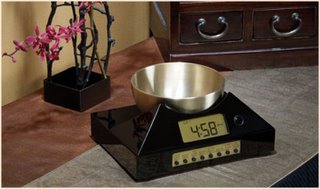 Zen Timepiece, a timer with bowl gong for slowing down adapted from Yoga Journal.com
Now & Zen, Inc.
1638 Pearl St.
Boulder, CO 80302
(800) 779-6383
Posted in yoga, Yoga Timer, Yoga Timers by Now & Zen
« Previous Page — « Previous Entries
Next Entries » — Next Page »
|
|
|
|